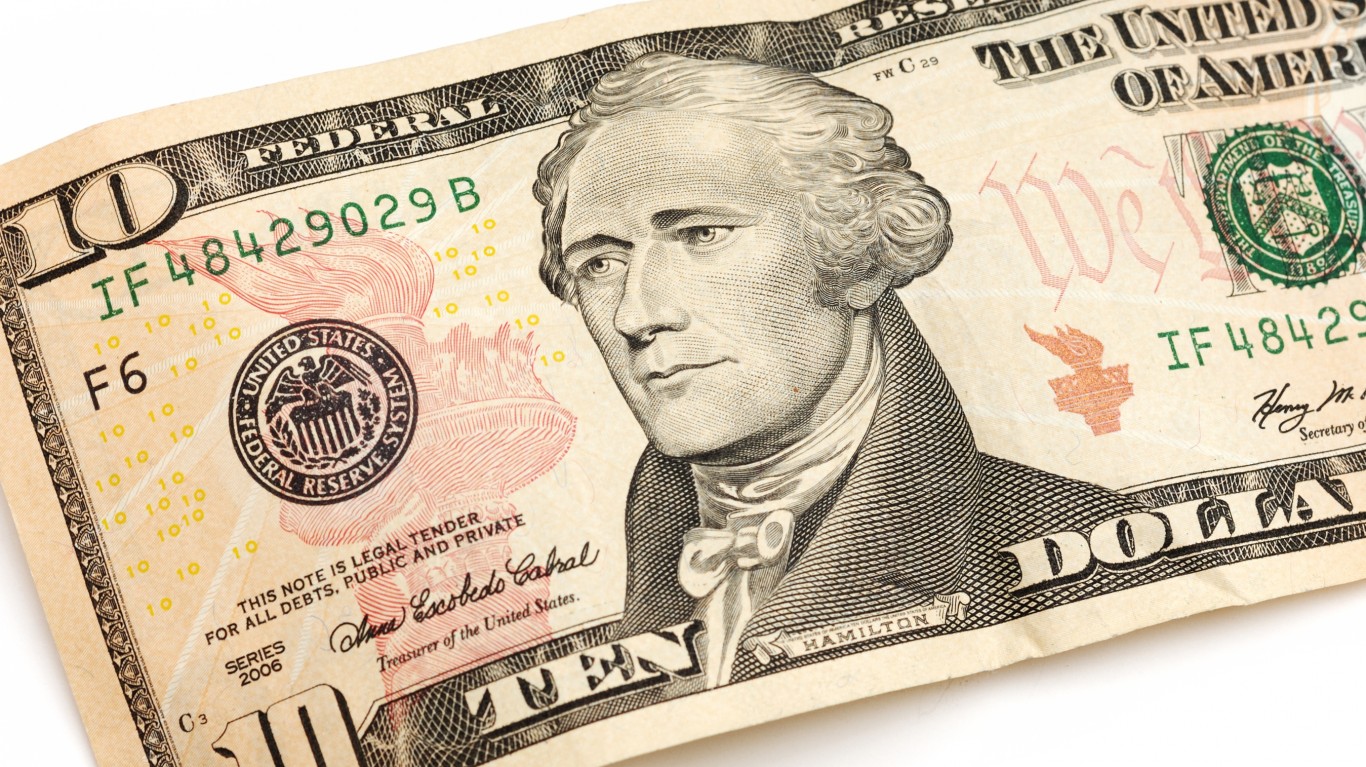 Lee Iacocca, Chrysler’s CEO in 1979, worked for $1 a year while his company paid back taxpayers $1.2 billion in loan guarantees. Edward Liddy, former CEO of Allstate (ALL), was paid $1 a year when he stepped in to run the crumbling AIG (AIG) in September 2008 at the request of Henry Paulson, who was Treasury Secretary.
Lee Iacocca, Chrysler’s CEO in 1979, worked for $1 a year while his company paid back taxpayers $1.2 billion in loan guarantees. Edward Liddy, former CEO of Allstate (ALL), was paid $1 a year when he stepped in to run the crumbling AIG (AIG) in September 2008 at the request of Henry Paulson, who was Treasury Secretary.
Among current CEO and business leaders, Steve Jobs of Apple (AAPL) works for $1 a year. Google CEO Eric Schmidt will make $1 this year and so will founders Sergey Brin and Larry Page. None of the four men, all of them billionaires due to ownership of stock in the companies that they run, needs the money.
CEOs take $1 year primarily for two reasons. The first is that the firms they run are in such deep trouble that they make the gesture to show that are willing to share the sort of sacrifice that their employees and shareholders must. The second reason is that some people who run companies, particularly those in which they own large positions in the firms, would be viewed as greedy to take compensation to operate the corporations that have made them rich.
24/7 Wall St. has put together a list of 15 CEOs who are paid too much, and should work for $1 a year. The people on the list are a combination of chief executives at companies which have taken Federal money or still survive on large taxpayers loans. The second are CEOs who have severely damaged the prospects of the companies that they run but, for some reason, have kept their jobs.
24/7 Wall St. has looked at each of the 15 firms these CEOs run, their histories, stock prices, and any aid they have received from the federal government. The pay packages that the chief executives receive, based on proxies or other public information, were also researched.
 1. AIG’s loud mouth Chief Executive Robert Benmosche had an annual pay package worth $10.5 million approved by pay czar Kenneth Feinberg. He took the package even though a number of AIG executives have much lower capped compensation and some AIG managers gave up bonuses that they earned earlier. The volatile Benmosche threatened to quit AIG last November in a fit over government restrictions on his company. If he had left, it would have been a severe setback for the struggling insurance firm which has received over $180 billion in US aid. Benmosche spent part of the summer at his Croatian villa while AIG was in deep trouble, a symbol of how little he cares about the symbolic value of spending long days in the office after taking the reins of a troubled firm supported by taxpayers. Benmosche served as CEO of Met Life (MET) for eight years and left a wealthy man. He could certainly afford to work for $1 a year, as his predecessor Ed Liddy did.
1. AIG’s loud mouth Chief Executive Robert Benmosche had an annual pay package worth $10.5 million approved by pay czar Kenneth Feinberg. He took the package even though a number of AIG executives have much lower capped compensation and some AIG managers gave up bonuses that they earned earlier. The volatile Benmosche threatened to quit AIG last November in a fit over government restrictions on his company. If he had left, it would have been a severe setback for the struggling insurance firm which has received over $180 billion in US aid. Benmosche spent part of the summer at his Croatian villa while AIG was in deep trouble, a symbol of how little he cares about the symbolic value of spending long days in the office after taking the reins of a troubled firm supported by taxpayers. Benmosche served as CEO of Met Life (MET) for eight years and left a wealthy man. He could certainly afford to work for $1 a year, as his predecessor Ed Liddy did.
 2. GM CEO Ed Whitacre, who has been the auto firm’s chairman since last June, about the time GM came out of Chapter 11 with $50 billion in US aid. After saying GM would make an extensive search for someone to replace the car company’s CEO Fritz Henderson, who Whitacre forced out in December of last year, the chairman took the top job for himself in January. An extensive search indeed. Whitacre then got the government to allow the GM board to grant him a $9 million compensation package. Whitacre’s lieutenants at GM were not so lucky Ken Fienberg recently said he will cut the number of senior GM executives who will receive base salaries of more than $500,000 this year. Whitacre claims GM will repay taxpayer loans, but it is extraordinary that he will not work for $1 a year until then. He became wealthy running AT&T and its predecessor companies.
2. GM CEO Ed Whitacre, who has been the auto firm’s chairman since last June, about the time GM came out of Chapter 11 with $50 billion in US aid. After saying GM would make an extensive search for someone to replace the car company’s CEO Fritz Henderson, who Whitacre forced out in December of last year, the chairman took the top job for himself in January. An extensive search indeed. Whitacre then got the government to allow the GM board to grant him a $9 million compensation package. Whitacre’s lieutenants at GM were not so lucky Ken Fienberg recently said he will cut the number of senior GM executives who will receive base salaries of more than $500,000 this year. Whitacre claims GM will repay taxpayer loans, but it is extraordinary that he will not work for $1 a year until then. He became wealthy running AT&T and its predecessor companies.
3. US SEC filings do not show what Toyota (TM) CEO Akio Toyoda makes. Since his family founded the firm and still owns a stake in the world’s No.1 car company, he is certainly well off. Recalls of more than eight million Toyotas worldwide will cost the corporation hundreds of millions of dollars. Some legal analysts believe that the damage from liability suits could set back Toyota another $5 billion. The trouble at the company drove its share price from $92 to $72. It has recovered some since then, but at one point the firm had lost over $30 billion in market capitalization. Toyoda told Congress that he puts his name on every car. He should show that means something.
 4. The turnaround of Palm (PALM) has been a miserable failure. Some Wall St. analysts even question its ability to survive, at least as an independent entity. Palm recently lost $18 million for its quarter ending February 28 and has lost money for 10 quarters in a row. Palm’s guidance for future quarters sent the firm’s stock down nearly 30% the day after it released it earnings. The shares have plunged from $18 in October to $4. Jon Rubinstein, Palm’s CEO, took over in June of last year so the entire collapse in share price has happened on his watch. The Palm proxy said he made $4.2 million last year. He should drop that to $1 for nearly destroying the company. Palm really can’t afford to pay him any more than that anyway
4. The turnaround of Palm (PALM) has been a miserable failure. Some Wall St. analysts even question its ability to survive, at least as an independent entity. Palm recently lost $18 million for its quarter ending February 28 and has lost money for 10 quarters in a row. Palm’s guidance for future quarters sent the firm’s stock down nearly 30% the day after it released it earnings. The shares have plunged from $18 in October to $4. Jon Rubinstein, Palm’s CEO, took over in June of last year so the entire collapse in share price has happened on his watch. The Palm proxy said he made $4.2 million last year. He should drop that to $1 for nearly destroying the company. Palm really can’t afford to pay him any more than that anyway
5. Freddie Mac (FRE) has a new CEO as of October—Charles Halderman. As the former chairman of Putnam Investment Management, he almost certainly became wealthy. According to Securities and Exchange Commission filings, Fannie Mae’s CEO, Michael Williams, and Haldeman each received $900,000 in salary for 2009. Each man got $3.1 million in “deferred salary” that was paid out in four cash installment last year. “This compensation is coming in the form of payments that they are more likely to get, without much risk,” Kevin J. Murphy, a professor at the University of Southern California, told the Associated Press. The two agencies received a total $110.6 billion in taxpayer money in 2009.
6. Fannie Mae (read above)
7. Blockbuster (BBI) CEO James Keyes made $8.4 million in the company’s last fiscal year. The movie rental company is teetering on the brink of Chapter 11. Keyes made none of the critical strategic moves that could have built revenue around internet streaming rentals, DVDs by mail, or kiosk-based rental services. His decisions, or lack of them, have helped push the firm’s share price from $1.40 last September to $.31. A payment of $1 would be generous.
 8. Michael Dell has done a great deal of damage to his company, Dell Computers (DELL), since he took over as CEO from Kevin Rollins in February 2007. Dell had backed Rollins in public right up until the end. The company earned $4.6 million in 2006, Rollins’ last full year. Net income has not matched that level since then. Dell’s shares have fallen about 40% since Rollins left. Apple’s (AAPL) stock is up over 150% during that same period and Hewlett-Packard (HPQ) has gained almost 30%. Dell has struggled with customer service problems and an inability to develop a blockbuster product. It has begun to enter the smartphone market—too late. Mr. Dell owns 226 million shares of his company which is over 11% of the outstanding shares. He made $2.2 million last year, hardly reasonable for a man who has done a great deal to ruin his firm’s chances to compete effectively with its largest competitors.
8. Michael Dell has done a great deal of damage to his company, Dell Computers (DELL), since he took over as CEO from Kevin Rollins in February 2007. Dell had backed Rollins in public right up until the end. The company earned $4.6 million in 2006, Rollins’ last full year. Net income has not matched that level since then. Dell’s shares have fallen about 40% since Rollins left. Apple’s (AAPL) stock is up over 150% during that same period and Hewlett-Packard (HPQ) has gained almost 30%. Dell has struggled with customer service problems and an inability to develop a blockbuster product. It has begun to enter the smartphone market—too late. Mr. Dell owns 226 million shares of his company which is over 11% of the outstanding shares. He made $2.2 million last year, hardly reasonable for a man who has done a great deal to ruin his firm’s chances to compete effectively with its largest competitors.
9. Lloyd Blankfien, the CEO of Goldman Sachs, made the symbolic gesture of taking nearly no pay this year, at least compared to the tens of millions he has taken in years past. Blankfein’s compensation for 2009 was a mere $862,657. He made $54 million in 2007 and $41 million in 2008. Goldman’s board could certainly argue that Blankfein should have been paid better. Goldman posted record profits in its last fiscal year and its shares are up 60% over the last year. But, Goldman’s image with the Administration, Congress, and the public has been badly damaged. Its role in the collapse of AIG is still in question. Its role in helping Greece “hide” some of its sovereign obligations is being investigated as well. The man on the street believes that Goldman bankers will crawl over the backs of their own children to make money. Blankfein would, from a strategic standpoint, be better off in the court of public opinion, or the next time that he has to go before Congress, to be able to say he was paid $1 even if Goldman is doing extraordinarily well.
 10. It is nearly impossible to find a company that dominates as its industry as much as Nokia (NOK). It has let such a large multitude of its opportunities be successful taken over by smaller competitors. Olli-Pekka Kallasvuo runs the world’s largest handset company by far. Nokia has a market share of about 35% globally, but, the high-end of the market has gone to RIM (RIMM), Apple (AAPL), and more recently to Google (GOOG) Android operating system powered phones. Apple has built a lead in the multimedia download business with iTunes, and handset software application download business with the App store that Nokia will never match. Olli-Pekka Kallasvuo will be remembered as a CEO who let his company’s size advantage be squandered because of lack of innovation.
10. It is nearly impossible to find a company that dominates as its industry as much as Nokia (NOK). It has let such a large multitude of its opportunities be successful taken over by smaller competitors. Olli-Pekka Kallasvuo runs the world’s largest handset company by far. Nokia has a market share of about 35% globally, but, the high-end of the market has gone to RIM (RIMM), Apple (AAPL), and more recently to Google (GOOG) Android operating system powered phones. Apple has built a lead in the multimedia download business with iTunes, and handset software application download business with the App store that Nokia will never match. Olli-Pekka Kallasvuo will be remembered as a CEO who let his company’s size advantage be squandered because of lack of innovation.
11. Take-Two Interactive (TTWO) has been one of the more poorly run companies in the video game industry since Zelnick Media took over the job of operating the firm through a management contract. Strauss Zelnick is Take-Two’s chairman, and one of his underlings at Zelnick Media, Ben Feder, acts as Take-Two’s CEO. They should make no more than $1 between them. The Zelnick Media agreement provides a monthly management fee of $208,333 ($2,500,000 per year) and the maximum annual bonus was increased to $2,500,000. The annual bonus for the fiscal year ended October 31, 2008 was $1,770,833. Since Zelnick Media has taken over TTWO shares are down 55%, the company has turned down a generous buyout offer from Electronic Arts (ERTS), and the firm’s financial performance has been abysmal.
12. Howard Stringer was brought in to turn Sony (SNE) around when he was made CEO in 2005. Over that period, Sony’s stock has gone from $40 to $36, significantly underperforming the DJIA. Sony, under Stringer’s stewardship, has run third in the three-horse race in the video console business behind Microsoft (MSFT) and Nintendo. Its TV and digital camera businesses have had shrinking margins, and Sony has been bested by a number of firms, particularly Apple (AAPL) and Amazon (AMZN), in the consumer electronics sector.
13. TheStreet.com has been through a period of bad earnings and worse financial reporting problems since Darryl Otte took over as interim and then permanent CEO starting in March 2009. TheStreet has been tardy in filings its financial data. The SEC is looking into the accounting for Promotions.com, a subsidiary that TheStreet sold in December for a reported $3.1 million. Otte has been a member of the company’s board since 2001, so he was intimately involved in the decision to buy Promotion. The Street’s diversification programs have not been successful. In 2009 the firm had revenue of $60.2 million, down 15% from 2008. Operating expenses for 2009 were $93.2 million, increase of 29%. For the trouble he has caused shareholders over the last year, Otte received a base salary of $425,000, a potential bonus of $320,000, and 650,000 restricted stock units.
 14. Dan Hesse, the CEO of Sprint (S), made $19 million in 2008. Hesse certainly did not receive that much last year, but the details won’t be out until Sprint’s proxy is released. What is out are Sprint’s horrible earnings. The company lost $2.4 billion on $32.3 billion in revenue in 2009. The numbers look worse compared with the improvements in the results from AT&T Wireless and Verizon Wireless, Sprint’s two larger rivals. Sprint’s stock is down over 70% since Hesse took over and there is nothing to make investors think that the problems at the company will do anything other than get worse.
14. Dan Hesse, the CEO of Sprint (S), made $19 million in 2008. Hesse certainly did not receive that much last year, but the details won’t be out until Sprint’s proxy is released. What is out are Sprint’s horrible earnings. The company lost $2.4 billion on $32.3 billion in revenue in 2009. The numbers look worse compared with the improvements in the results from AT&T Wireless and Verizon Wireless, Sprint’s two larger rivals. Sprint’s stock is down over 70% since Hesse took over and there is nothing to make investors think that the problems at the company will do anything other than get worse.
15. GE (GE) CEO Jeff Immelt has run the conglomerate since 2001 and the company’s stock has dropped from $54 to $18 over that period. The important question from the standpoint of compensation is what Immelt has done for shareholders more recently. Perhaps one good thing Immelt did is to agree to sell a controlling interest, which he said he never do, of NBCU to Comcast (CMCSA). The entertainment unit never seemed to fit well inside GE. Unfortunately, NBCU was not really GE’s biggest problem last year. Due to underperformance at its capital unit and some of its industrial and infrastructure divisions, GE’s earnings dropped from $17.4 billion in 2008 to $11 billion last year. GE public relations has made a great deal out of the fact that Immelt has not taken his bonus for two years in a row, but he made $9.9 million last year and still had a base salary of $3.3 million
Douglas A. McIntyre. McIntyre was on the board of On2 Technologies with Mr. Zelnick and served with Mr. Otte on the board of TheStreet.com
Sponsor: 3 Recovery Stocks to Own Now. Get the names of the best cheap stocks to rebuild your wealth in 2010 and beyond. Each stock sells for less than $10 a share and is set to double in the next 12 months. Click here to learn more
Take This Retirement Quiz To Get Matched With A Financial Advisor (Sponsored)
Take the quiz below to get matched with a financial advisor today.
Each advisor has been vetted by SmartAsset and is held to a fiduciary standard to act in your best interests.
Here’s how it works:
1. Answer SmartAsset advisor match quiz
2. Review your pre-screened matches at your leisure. Check out the
advisors’ profiles.
3. Speak with advisors at no cost to you. Have an introductory call on the phone or introduction in person and choose whom to work with in the future
Take the retirement quiz right here.
Thank you for reading! Have some feedback for us?
Contact the 24/7 Wall St. editorial team.



